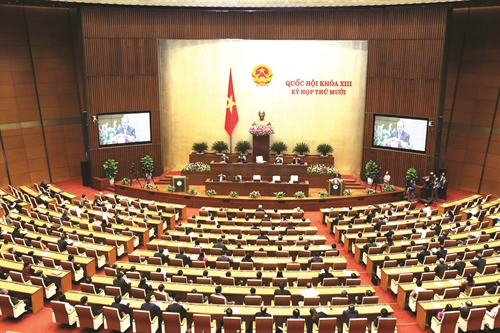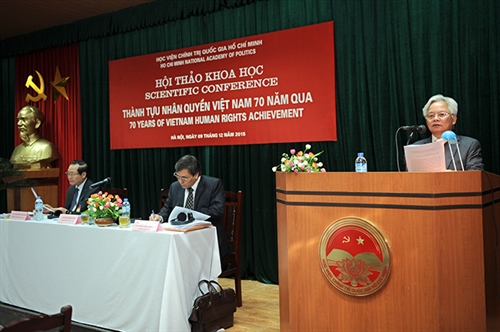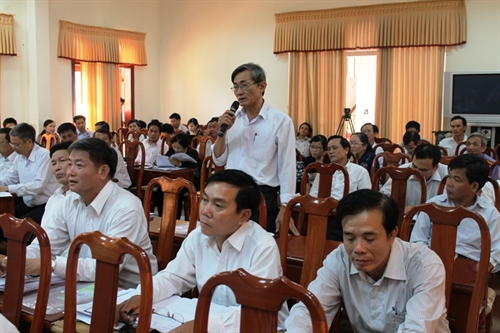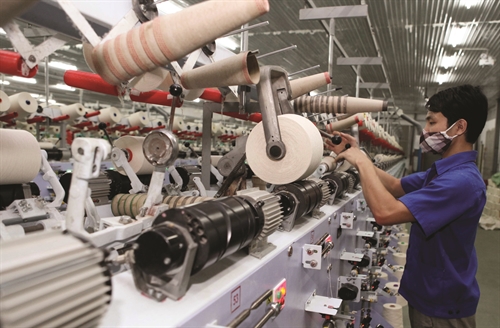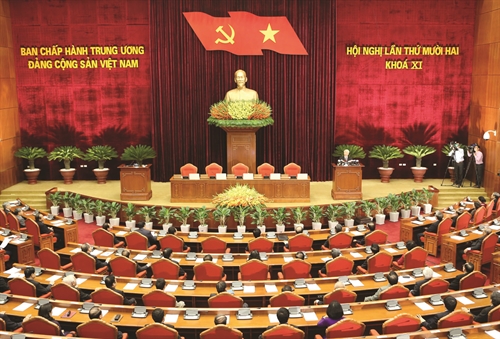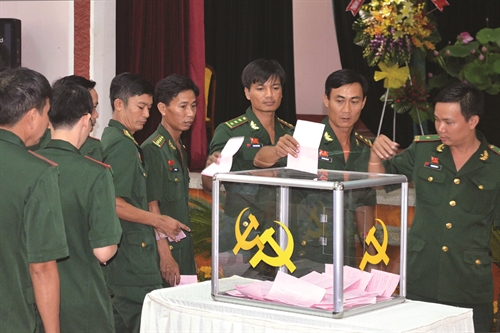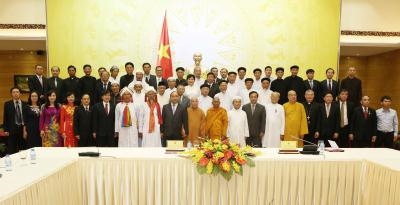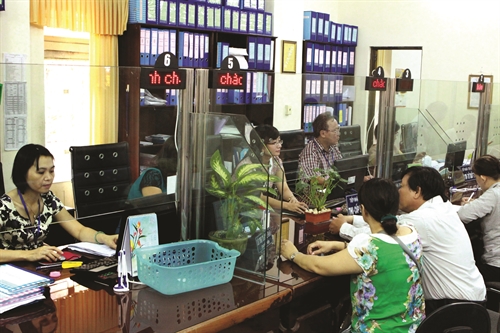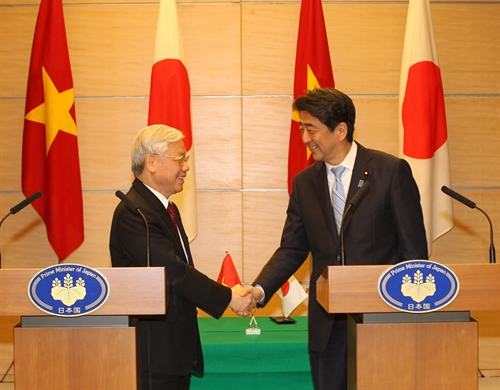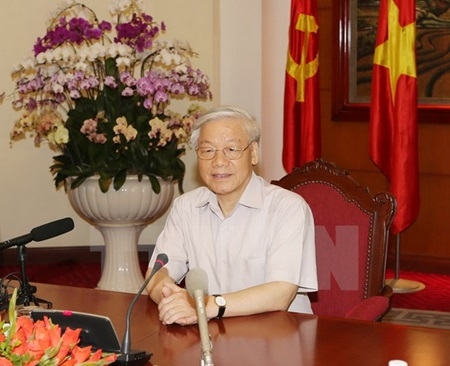Professor Dr. Chu Van Cap
Ho Chi Minh National Academy of Politics
Why criteria of a modernity-oriented industrial nation are needed
At the 8th National Party Congress in 1996, the Party set the goal for the country to become “an industrial nation with modern physical-technical foundations” by 2020. The goal was expressed in a “more flexible” manner in the document of the 9th National Party Congress in 2001: “By 2020, our country will basically become a modernity-oriented industrial one.” At the 10th National Party Congress in 2006, the Party stressed:
“Promoting the industrialization and modernization and developing a knowledge-based economy to lay a foundation to turn the country into basically a modernity-oriented industrial one by 2020.”
The Platform for national construction during the transitional period toward socialism (supplemented and developed in 2011) states:
“From now until mid-21st century, the entire Party and people should spare no effort to build our country into a modern industrial nation with socialist orientation.”[1]
The draft Political Report to be presented at the 12th National Party Congress pointed out one of the shortcomings “…many targets and criteria to strive to turn the country into basically a modernity-oriented industrial nation by 2020 will be out of reach.”[2] Therefore, the overall objective for the next five years (2016-2020) will be “to comprehensively and synchronously promote the renewal process; to develop the economy fast and sustainably, build the foundation for early turning the country into basically a modernity-oriented industrial one…”[3]
Over the past 20 years since the 8th National Party Congress, the Party has consistently pursued the goal to develop the nation into a modernity-oriented industrial one although there have been adjustments in content and time to achieve the goal. However, there is no official document on a set of criteria to assess and measure “a modernity-oriented industrial nation.” Therefore, the development of such criteria is necessary and of important significance in order to see which stage of the industrialization and modernization process Vietnam is in and map out orientations for the country’s targets in the context that the country is further renewing its growth model, restructuring its economy and raising the efficiency and competitiveness of the economy. These criteria will serve as “foundations” for setting socio-economic development targets as well as solutions to achieve such targets. Furthermore, the agreed understanding and awareness of “criteria of a modernity-oriented industrial nation” will be of practical significance to evaluate development policies and targets set at the 9th National Party Congress: “By 2020, our country will basically become a modernity-oriented industrial nation.”
 |
| Placement of a thousand-ton rotor of generation unit No. 1 of Son La-Lai Chau hydropower project is in progress __Photo: Ngoc Ha/VNA |
Developing criteria of a modernity-oriented industrial nation
At present, there are neither grounds nor standards to define a modernity-oriented industrial nation. Scientists from the National Economics University hold that a modernity-oriented industrial country is a nation whose socio-economic development level is in the period of completing industrialization and modernization.[4]
Accordingly, to turn the nation into a modernity-oriented industrial one must be associated with the industrialization process - the process of switching from an agricultural (or pre-industrial) economy to an industrial economy; from an agricultural society to an industrial society; from an agricultural civilization to an industrial civilization. Industrialization is a substantial transformation of the economy or, in a broader meaning, is the transformation of the socio-economy and the civilization. Industrialization means a path for turning a developing country into a modernity-oriented industrial one and, to a higher level, a modern industrial country. “Modernity” is a rough concept and there are no rigid “modernity” criteria for all historical development periods.
In the contemporary time, globalization has become an inevitable trend and the strong development of science and technology has a direct impact on all aspects of socio-economic life. The implementation of industrialization must be directed toward modernity and comply with requirements of a knowledge-based economy and an intelligent civilization, and be associated with sustainable development. The development of criteria of an industrial country should consult criteria of newly industrialized countries (NICs) worldwide and, more importantly, be suitable to the country’s socio-economic development viewpoints and specific conditions - the stage to speed up industrialization and modernization on the basis of further renovating the growth model, restructuring the economy and raising the efficiency and competitiveness of the economy.
Criteria of a modernity-oriented industrial country include those reflecting socio-economic development level and environmental quality. The draft document to be presented to the 12th National Party Congress points out orientations for such criteria:
Firstly, criteria on the economy’s development level (average per-capita GDP, the proportions of manufacturing industry and agriculture, the urbanization rate, and average per-capita electricity) are used as foundations to determine specific economic development targets for the 2016-20 period. They are: “the average economic growth rate of 6.5-7 percent per annum over the next five years. By 2020, the average per-capita GDP will reach USD 3,200-3,500; industry and services will make up more than 85 percent of GDP; the total investment capital of the entire society in the five years will equal 32-34 percent of GDP on average; and state budget deficit will not exceed 4 percent of GDP. Total factor productivity (TFP) will make up 25-30 percent of growth, the annual social working productivity will grow 4-5 percent on average, energy use per unit of GDP will decrease by 1-1.5 percent per year, and the urbanization rate will reach 38-40 percent by 2020.”[5]
Secondly, indices of social development (human development index (HDI), average life expectancy, inequality index in income distribution, the number of medical doctors per 10,000 people, the rate of trained laborers, etc.) are translated into specific social development targets for the 2016-20 period. They include: “By 2020, agricultural labor will make up 35-40 percent of the total social workforce; the rate of trained labor will reach 65-70 percent, with 25-26 percent possessing diplomas and certificates; the urban unemployment rate will be under 4 percent; there will be 10 medical doctors and over 26 patient beds per 10,000 people; health insurance coverage will reach over 80 percent of the population; the poverty rate will decrease 1.3-1.5 percent annually on average.”[6]
Thirdly, environmental quality criteria (the rate of population access to clean water, forest coverage and the rate of greenhouse gas emission) have been identified for the 2016-20 period. “By 2020, 95 percent of urban residents and 90 percent of rural residents will have access to clean, hygienic water; 80-85 percent of hazardous wastes and 95-100 percent of medical wastes will be disposed of; forest coverage will reach 44-45 percent.”[7]
The above criteria have been developed to assess the country’s socio-economic development level associated with the industrialization and modernization process during 2016-20 - the period in which industrialization and modernization will be accelerated together with the development of a modern socialist-oriented market economy and international integration associated with the development of a knowledge-based economy in which science-technology, knowledge and high-quality human resources will become a major driving force, and with sustainable development. Such criteria embrace socio-economic issues (including human development index) and environmental issues, and are basically conformable with the targets of the country’s 2011-20 socio-economic development strategy, particularly the 2016-20 period.
Major solutions
It is necessary to continue performing the tasks to lay a foundation to early turn the country into a modernity-oriented industrial one according to the set criteria.
Institutions of the socialist-oriented market economy should be basically and synchronously completed according to the universal standards of a modern market economy and international integration.
The development of human resources, especially high-quality ones, for the country in general and each sector and field in particular, needs synchronous solutions. These solutions should be focused on the strong, comprehensive and fundamental reform of education and training by attaching importance to quality and efficiency and the development of learners’ virtues and capability; combining the re-planning of the network of vocational training and tertiary education institutions with the socio-economic development and human resource development master plans; and increasing investment in human resource development, especially education and training.
Science and technology must be strongly developed to become a top national policy and the most important driving force to expand the modern production forces and the knowledge-based economy and increase the productivity, quality, efficiency and competitiveness of the economy as well as protect the environment and safeguard national defense and security. Vietnam’s science and technology should reach the development level of leading ASEAN nations by 2020 and the world’s advanced level in some areas by 2030. To achieve this target, investment in science and technology must have focuses and priorities to create breakthroughs in a number of high technologies that have positive impacts to raise the competitiveness and efficiency of the economy.
In the meantime, social resources need to be mobilized and effectively used to develop a relatively synchronous socio-economic infrastructure system with a number of modern works. Diversified investment will be prioritized for key fields, including a synchronous transport infrastructure that links major economic centers and transport axes, an electricity infrastructure that ensures sufficient power supply for production and daily life and meets socio-economic development requirements, an irrigation infrastructure that meets agricultural development requirements and copes with climate change and sea level rise, and a modern and synchronous urban infrastructure that gradually meets the green urban standards of an industrial nation.
Furthermore, it is a necessity to select and develop a number of modern industrial sectors that create spillover effects on the economy. Attention should be paid to further developing industries toward modernity, increasing scientific and technological content and the local value in products, and sectors with comparative advantages and of strategic significance for fast and sustainable development so as to raise the independence and self-reliance of the economy that can deeply and effectively penetrate into the global production and distribution chains.
To that end, it is necessary to select and develop a number of processing, manufacturing, hi-tech, clean and energy industries, electronics engineering and defense-security industry. Importance should be attached to developing industries with competitive edge, supporting industries, and industries serving agriculture and rural areas. Biotechnology and environmental industry should be developed to become major industries by 2020.
A number of advantageous services with high knowledge and hi-tech content such as tourism, ocean shipping, aviation, telecommunications, and information technology should also be developed. Meanwhile, services with high added value like finance, banking, insurance, logistics and other services supporting production and business should be modernized and expanded.-
